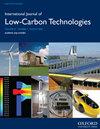太阳能光伏板的革命性封装解决方案:零水零氧真空玻璃取代EVA/PVB薄膜
IF 2.3
4区 工程技术
Q3 ENERGY & FUELS
引用次数: 0
摘要
由于世界能源短缺,太阳能作为取之不尽用之不竭的新型绿色能源和主要能源之一受到了广泛关注。许多研究人员研究了太阳能电池的各种材料和效率;然而,如何延长太阳能电池的寿命却很少被研究。目前,太阳能电池的主要封装方法是用EVA(乙烯-醋酸乙烯酯)和PVB Poly(乙烯-丁醛)等薄膜密封其表面。遇到的主要问题是水和氧气的侵蚀导致太阳能电池的使用寿命和效率降低。受太空卫星太阳能电池板的启发,发明了一种革命性的零H2O和O2真空玻璃封装解决方案。根据深度学习的预测,实验结果使太阳能电池的30-35年使用寿命几乎翻了一番。因此,建筑一体化光伏(BIPV)可以用于建筑物的70年寿命。该方法适用于各种太阳能电池,如晶硅电池、CIGS、CdTe和钙钛矿薄膜电池等。在实践中,真空玻璃封装中遇到的主要问题包括:确保支撑柱不刺穿薄膜PV,并确保其准确放置在带隙之间;确保热量的排放不在真空中进行;确保密封片盖准确覆盖玻璃上的排气口;长时间保持真空度;绝缘密封材料的边缘以及其他问题。通过计算机视觉的机器学习和薄膜光伏的设计结构,很好地解决了上述问题。本文章由计算机程序翻译,如有差异,请以英文原文为准。
Revolutionary Encapsulating Solution of Solar PV Panels: Vacuum glazing with zero H2O and O2 replacing EVA/PVB films
Due to the shortage of energy in the world, solar energy has received widespread attention as an inexhaustible new green energy and as one of the main sources of power. Many researchers have studied the various materials and efficiencies of solar cells; however, how to extend the life of solar cells has rarely been studied. At present, the main encapsulating method of solar cells is to seal their surface with films such as EVA (Ethylene-Vinyl Acetate) and PVB Poly (vinyl butyral). The main problem that has been encountered is that the erosion of water and oxygen leads to a reduction in the service life and efficiency of solar cells. Inspired by the solar panels of satellites in space, a revolutionary vacuum-glazing encapsulating solution with zero H2O and O2 has been invented. The experimental results have nearly doubled the 30–35-year service life of solar cells, based on Deep Learning predictions. Therefore, the Building Integrated Photovoltaic (BIPV) can be used for the 70-year life of a building. The method is applicable to various solar cells, such as Crystalline Si cells, CIGS, CdTe and Perovskite film cells, etc. In practice, the main problems encountered in the encapsulation of vacuum glazing include the following: ensuring that the supporting pillar does not pierce the thin film PV and that it is placed accurately between the band gaps; ensuring that the emission of heat is not conducted in a vacuum; ensuring that the sealing sheet covers cover the exhausting port on the glass accurately; maintaining the vacuum degree for a long time; insulating the edge of the sealing materials, as well as other issues. The above problems have been solved perfectly through Machine Learning of Computer Vision and the design structure of the thin film PV.
求助全文
通过发布文献求助,成功后即可免费获取论文全文。
去求助
来源期刊

International Journal of Low-carbon Technologies
Engineering-Architecture
CiteScore
4.30
自引率
4.30%
发文量
106
审稿时长
27 weeks
期刊介绍:
The International Journal of Low-Carbon Technologies is a quarterly publication concerned with the challenge of climate change and its effects on the built environment and sustainability. The Journal publishes original, quality research papers on issues of climate change, sustainable development and the built environment related to architecture, building services engineering, civil engineering, building engineering, urban design and other disciplines. It features in-depth articles, technical notes, review papers, book reviews and special issues devoted to international conferences. The journal encourages submissions related to interdisciplinary research in the built environment. The journal is available in paper and electronic formats. All articles are peer-reviewed by leading experts in the field.
 求助内容:
求助内容: 应助结果提醒方式:
应助结果提醒方式:


